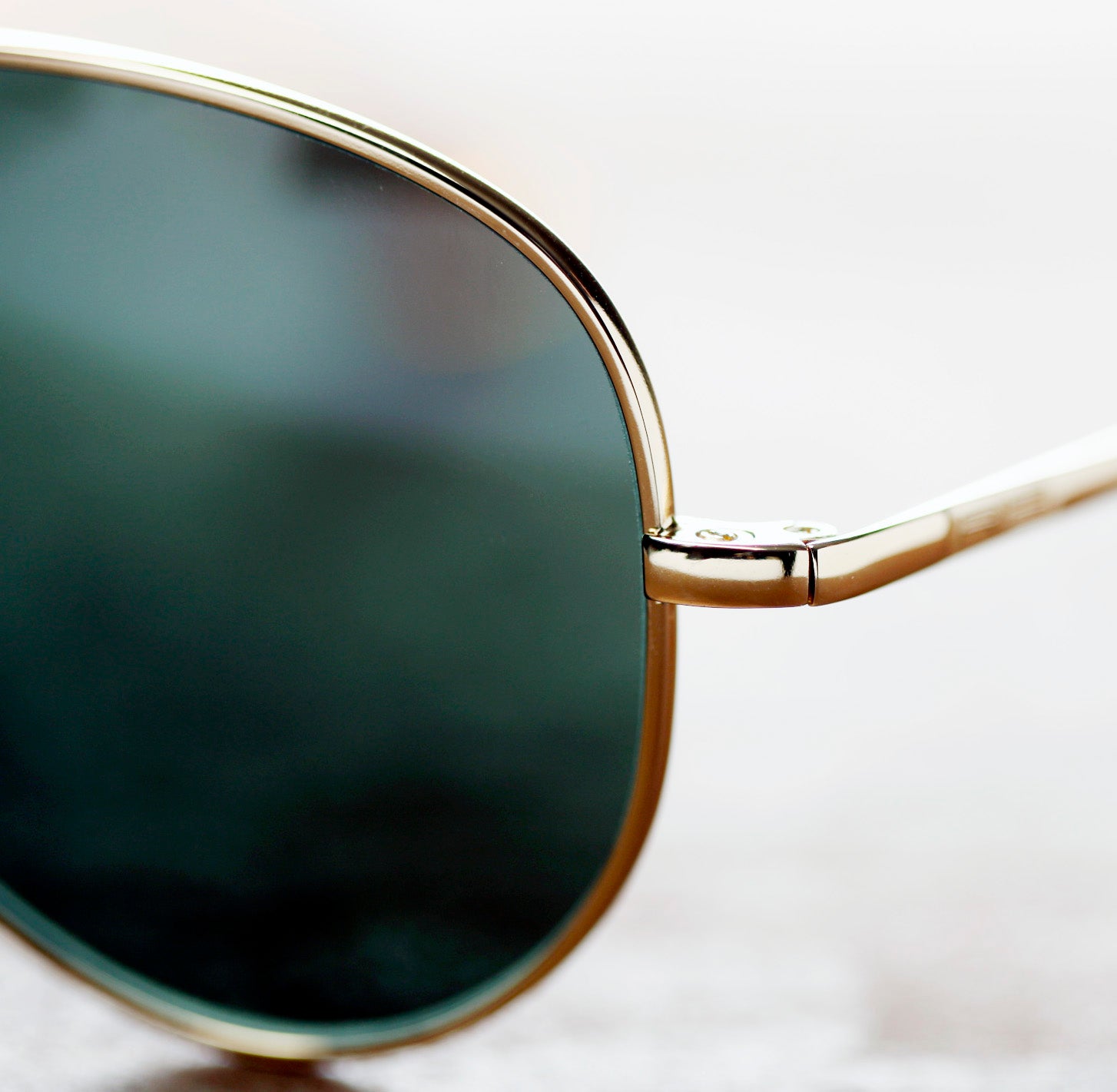The Importance of Sunglasses to Flying Safety
The importance of sunglasses to flying safety became a known very early on in the history of aviation.
But, I get ahead of myself.
Sunglasses
Sunglasses, in one form or another, have been around for a long time.
Sometime around 7000 BC the Palaeo-Eskimos were using dog sleds and evidence of them is found throughout the Arctic.
In 1576 Martin Frobisher, an uneducated pirate-mariner, while attempting to find the elusive Northwest Passage encounters the Inuit on Resoltion Island.
The Inuit would suffer from snow blindness (also known as sunburn of the eyes) and solved the problem with snow goggles made out of bone, ivory or wood like these:

Pilot Vision
At least 80% of the information required for flight performance is vision related.
The FAA issued a Pilot Safety Brochure on Pilot Vision to acquaint pilots with the importance of vision as it relates to flying airplanes.
Vision is a pilot’s most important sense to obtain reference information during flight.
Most pilots are familiar with the optical aspects of the eye.
Before we start flying, we know whether we have normal uncorrected vision, are farsighted or nearsighted, or have other visual problems.
Most of us who have prescription lenses, contacts, or eyeglasses have learned to carry an extra set of glasses with us as a backup when we fly.
What is Vision?
Vision, or seeing, involves the transmission of light energy (images) from the exterior surface of the cornea to the interior surface of the retina (inside the eye) and the transference of these signals to the brain.
Light energy is an Electromagnetic radiation.
It can further be defined into
- Light can be defined as a form of energy containing particle-like photons with wavelike properties. It can affect the physiology of an organism. For example, photosynthesis, sense of sight.
- Light energy is a form of energy that is visible to the human eye in a specific wavelength of about 400-700 nanometers. It is referred to as visible light of electromagnetic spectrum.
Since light itself is energy, then another definition is relevant: light is nature’s way of transferring energy through space.
Light is all around us. It has the ability to tan or burn our skin and eyes, it can be harnessed to melt metals, or heat our food.
In other words, light can be dangerous to our eyes.
See and Be Seen:
Outside of a 10° cone, visual acuity drops 90%. For this reason pilots must continually move their heads in order to avoid a midair collision.
Pilots are 5 times more likely to have a midair collision with an aircraft flying in the same direction than with one flying in the opposite direction.
But there are other factors that affect a pilot's vision.
For example, excessive ambient light, especially from light reflected off the canopy, surfaces inside the aircraft, clouds, water, snow, fog and desert terrain can cause uncomfortable squinting, eye tearing and even temporary blindness.
Excessive ambient light is normally related to the strength of sunlight reaching the pilot's eyes.
Not Just Pilots
All of these issues also affect each and everyone of us whether a pilot or not.
In your car the same problems exist, walking on the beach while on vacation can be a problem. In fact, anytime you are exposed to sunlight it will effect your vision.
Another issue is injury or damage to eyes, even to the point of temporary or permanent blindness.
Sunglasses
Dealing with bright sunlight has been a problem for a long time
Following analysis of WW I aircraft mishaps, Col W. H. Wilmer and Maj Conrad Berens wrote in 1920, “Of all the physical qualifications necessary for the military aviator there is not one that is more important than good sight.”
The best solution to excessive sunlight is a great pair of sunglasses.
Sunglasses help safeguard a pilot's most important sensory asset - vision.
A quality (I stress quality) pair of sunglasses are essential in the cockpit environment to optimize a pilot's visual performance. In fact, a good pilot will always carry at least TWO pairs of sunglasses with him in his flight bag.
That's how important a quality pair of sunglasses are to the safety of the pilot, the passengers and the aircraft itself.
In fact, the FAA has issued a Safety Brochure titled "Sunglasses for Pilots: Beyond the Image" to make pilots aware of the importance of sunglasses to flying safety.
Aviator Sunglasses
The reason I created the Aviator Sunglasses website was to provide a great resource for pilots to find the quality sunglasses as recommended by the FAA.
Over time I publish blog posts concerning eye safety, how to's related to sunglasses, prescription sunglasses and new/updated sunglasses.
So whether you are a pilot or just interested in fashion, don't just purchase any old sunglasses; always get, carry and wear quality sunglasses!
Thank you for visiting us!






Leave a comment
This site is protected by hCaptcha and the hCaptcha Privacy Policy and Terms of Service apply.